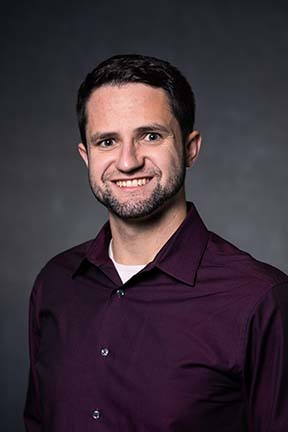Validating Space Weather Models Using Image-Based
Geometric Constraints
Christopher E. Rura
Ph.D. Candidate
Department of Physics
The Catholic University of America
Wed, February 8, 2023 - 4:00 PM
Karl Herzfeld Auditorium of Hannan Hall - Rm 108
Also Streaming Online
ZOOM: https://cua.zoom.us/j/87982450007?pwd=UUUvNXE4YkM2dmh5L1AyMXk5L21NZz09
Meeting ID: 879 8245 0007
Passcode: 658406
 Observations of the solar corona provide key insight to the determination of the orientation of the Sun’s magnetic field due to the special conditions of plasma in the solar corona. The spatial structure of plasma density features in the solar corona can be treated as a proxy to the spatial orientation of features in the coronal magnetic field due to these conditions. Automated plasma density feature tracing methods provide important boundary conditions to space weather modeling by constraining the approximated spatial orientation of the large-scale coronal magnetic field. These boundary conditions are currently uncertain and mask the ability to validate important physics of various space weather models. We seek to improve the accuracy of constraints and thus improve space weather modeling by providing a framework in which to quantitatively verify boundary conditions assumed by a model using solar white-light observations. Previous studies provided a method of using quasi-radial features detected in coronagraph images to improve coronal magnetic field models by comparing the orientation of the detected features to the projected orientation of the model fields. As a part of these studies, coronal features are traced using an automated Quasi-Radial Feature Tracing (QRaFT) algorithm that uses adaptive thresholds to extract coronal features and approximate their orientation using polynomials. The orientation angles of these traced features are then used as input for optimizing and constraining the coronal magnetic field model to check that features traced are indicative of true magnetic structures.
Observations of the solar corona provide key insight to the determination of the orientation of the Sun’s magnetic field due to the special conditions of plasma in the solar corona. The spatial structure of plasma density features in the solar corona can be treated as a proxy to the spatial orientation of features in the coronal magnetic field due to these conditions. Automated plasma density feature tracing methods provide important boundary conditions to space weather modeling by constraining the approximated spatial orientation of the large-scale coronal magnetic field. These boundary conditions are currently uncertain and mask the ability to validate important physics of various space weather models. We seek to improve the accuracy of constraints and thus improve space weather modeling by providing a framework in which to quantitatively verify boundary conditions assumed by a model using solar white-light observations. Previous studies provided a method of using quasi-radial features detected in coronagraph images to improve coronal magnetic field models by comparing the orientation of the detected features to the projected orientation of the model fields. As a part of these studies, coronal features are traced using an automated Quasi-Radial Feature Tracing (QRaFT) algorithm that uses adaptive thresholds to extract coronal features and approximate their orientation using polynomials. The orientation angles of these traced features are then used as input for optimizing and constraining the coronal magnetic field model to check that features traced are indicative of true magnetic structures.
We compare quasi-radial features traced by the QRaFT algorithm in white-light coronagraph observations obtained from the K-Coronagraph instrument at the Mauna Loa Solar Observatory (MLSO K-Cor) and from the COR-1 coronagraph aboard NASA’s STEREO spacecraft to outputs of an advanced solar coronal MHD model developed by Predictive Science Inc. (PSI) for forecasting recent solar eclipses. This model provides a 3D solution of the corona which allows us to rotate the solution and project it onto a plane-of-sky view from any perspective. We do this by using the FORWARD toolset to rotate the output solution from PSI’s 2017 solar eclipse prediction to each coronagraph observation’s perspective and then integrate the electron density of the model solution to produce synthetic coronagraph images co-aligned to each coronagraph observation. We use six observations from each observatory taken around the date of the solar eclipse along with corresponding model images for each observation, each approximately 60-degrees apart, to provide a 360-degree view of the Sun in our dataset. Using the magnetic field parameters generated by this model, we quantify the angular difference of each pixel in features traced in the model images and white-light coronagraph observations when compared to the expected magnetic orientation. For each population, we calculate histograms of these angular discrepancies and then compute analytical probability densities using a gaussian kernel density estimation. We then perform statistical analyses that measure the similarity of probability distributions to determine the similarity of the feature tracing method’s performance between the two populations to quantify the accuracy and uncertainty of the model output to the observational data. Preliminary results of this validation framework will be discussed, as well as plans for future work and improvements to the method.
Refreshments served at 3:45 PM
If you have any questions about the Colloquium Series or would like to make a donation please contact the Physics Department, cua-physics@cua.edu or (202) 319-5315.
